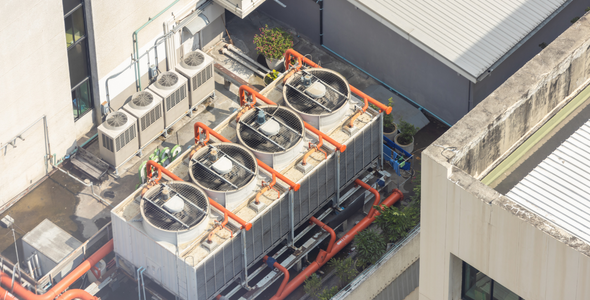info@champait.com
+85621 262442

Data center cooling systems are essential infrastructure components designed to regulate and maintain optimal temperatures within data center environments. These systems ensure that IT equipment, including servers, storage devices, and networking hardware, operate efficiently and reliably by dissipating heat generated during their operation.
Key components and considerations of data center cooling systems include:
Precision Air Conditioning (PAC): Precision air conditioning units are specialized cooling systems designed to provide precise temperature and humidity control within data center environments. They use advanced cooling technologies, such as chilled water or refrigerant-based systems, to regulate airflow and maintain consistent temperatures across server racks and equipment.
Computer Room Air Conditioning (CRAC): Computer room air conditioning units are similar to precision air conditioning units but are specifically tailored for cooling small to medium-sized data center spaces. They typically use a combination of air handlers, refrigerant coils, and compressors to remove heat from the air and maintain optimal environmental conditions.
Chilled Water Systems: Chilled water systems utilize chilled water as a cooling medium to absorb heat from data center equipment. Water-cooled chillers and cooling towers are used to generate and circulate chilled water throughout the data center, where it is distributed to cooling coils or heat exchangers located near IT equipment to dissipate heat.
Direct Expansion (DX) Cooling: DX cooling systems, also known as refrigerant-based cooling systems, use refrigerant gas to absorb heat from the air and transfer it outside the data center. DX units are commonly used in smaller data center environments and can provide efficient cooling with lower upfront costs compared to chilled water systems.
Containment Solutions: Hot aisle/cold aisle containment solutions are used to segregate hot and cold air streams within the data center, preventing hot and cold air from mixing and improving overall cooling efficiency. This approach helps optimize airflow, reduce energy consumption, and enhance cooling effectiveness.
Free Cooling: Free cooling systems leverage ambient air temperatures to supplement or replace mechanical cooling methods, such as air conditioning or refrigeration, during cooler periods. This approach can significantly reduce energy consumption and operating costs, especially in regions with favorable climate conditions.
Environmental Monitoring: Environmental monitoring systems are deployed to continuously monitor temperature, humidity, airflow, and other environmental parameters within the data center. These systems provide real-time insights into environmental conditions and help identify potential cooling issues or hot spots before they escalate into problems.
Energy Efficiency Measures: Various energy efficiency measures, such as hot aisle/cold aisle layout design, variable speed fans, economizers, and energy-efficient cooling equipment, are implemented to optimize cooling system performance and reduce overall energy consumption.
By implementing efficient and reliable cooling systems, data center operators can ensure the uninterrupted operation of critical IT infrastructure, mitigate the risk of equipment failure due to overheating, and optimize energy usage to reduce operational costs and environmental impact.
